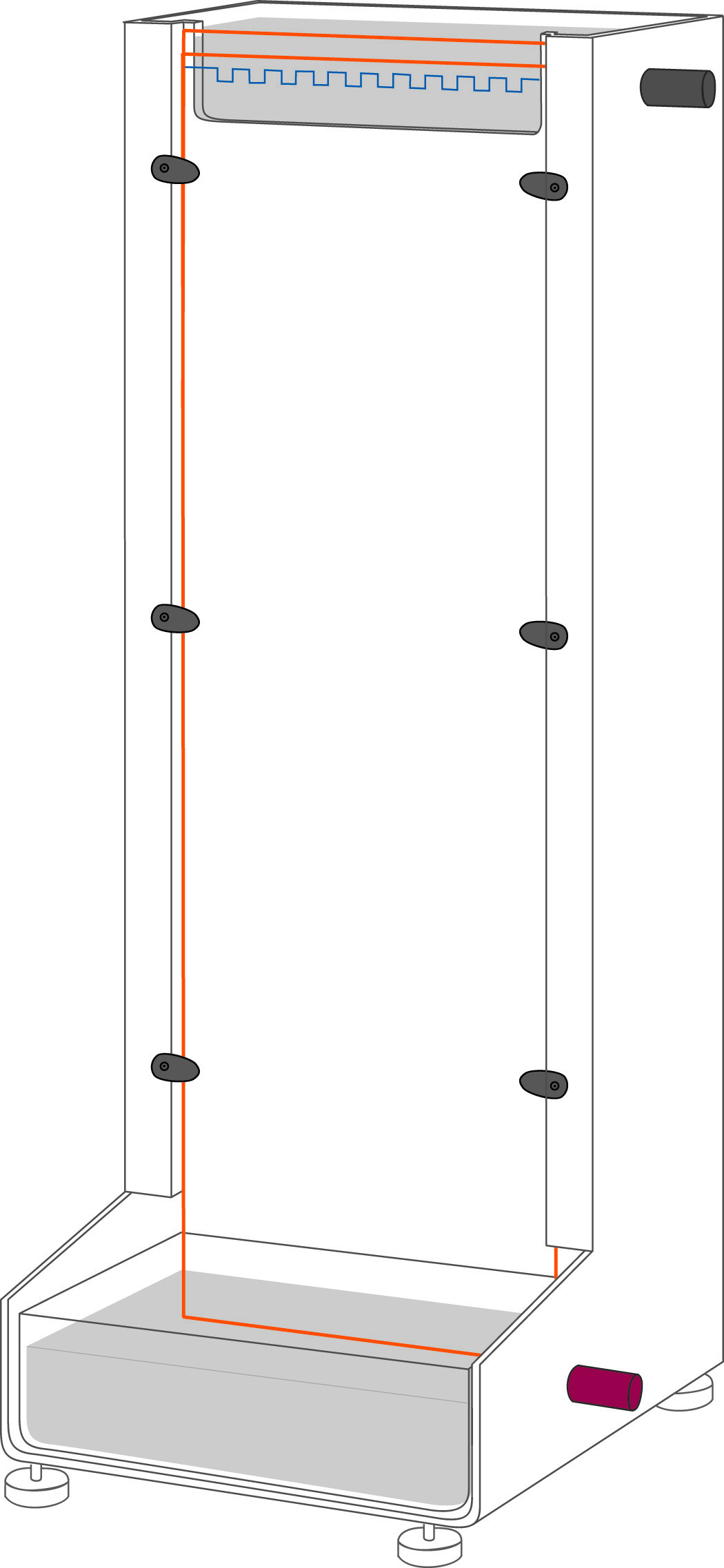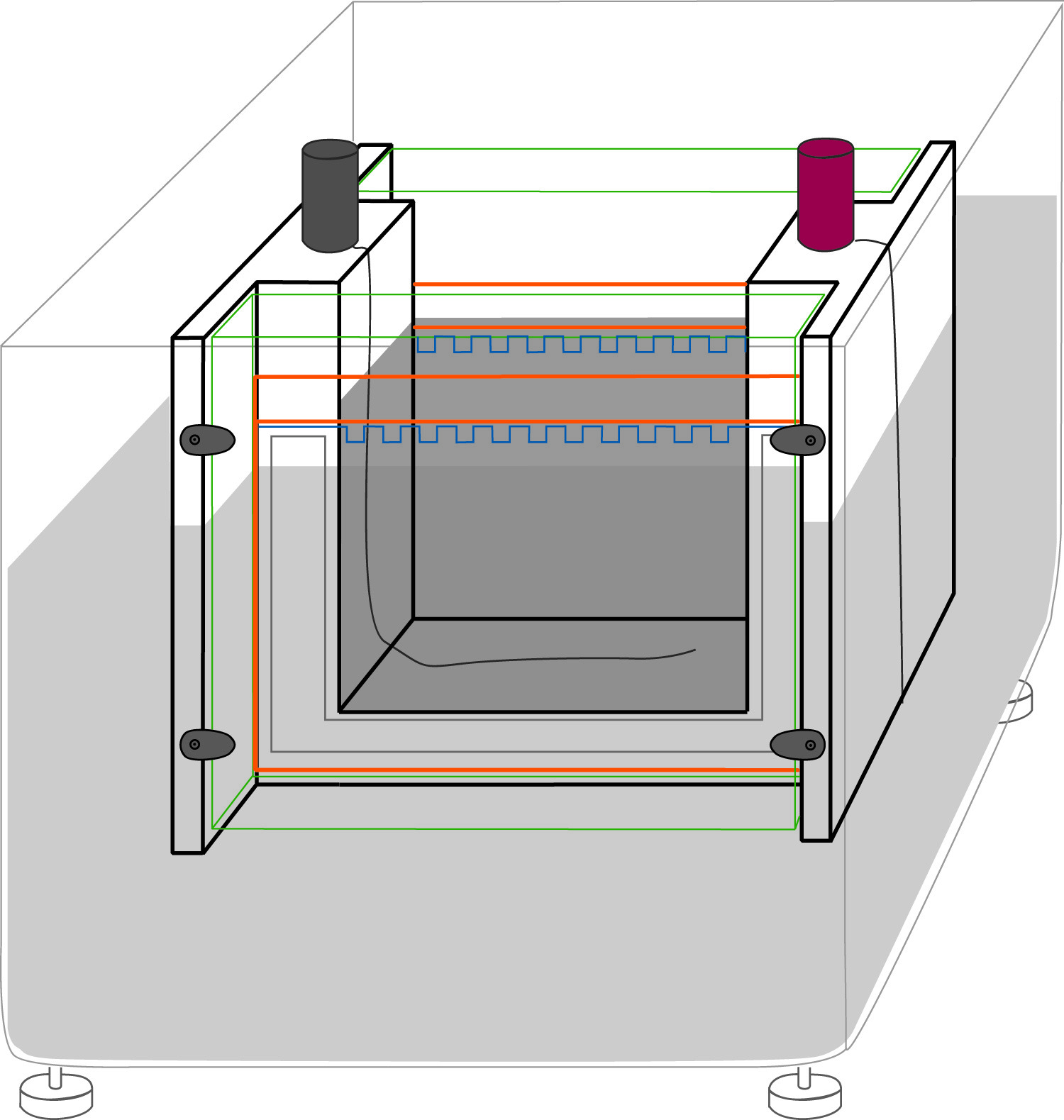Post Electrophoretic Analysis Articles
Horizontal and Vertical Gel Systems – The Vertical Slab Gel System

The vertical gel electrophoresis apparatus. The gel is clamped into the apparatus so that the lower end is immersed in the lower buffer chamber, and the upper end forms one wall of the upper chamber. The gel provides the only electrical connection between the two buffer chambers. Cooling is provided by a metal heat sink behind the gel. This type of apparatus allows high voltages (>1500 oV) to be used.
A typical vertical apparatus used for sequencing is shown in the figure below. This system shows the components common to all vertical slab systems. The gel is cast between two glass plates, separated by spacers, typically less than 2mm thick. The gel is mounted in the system so that the top is in contact with the negative electrode chamber, and the bottom is in contact with the positive electrode chamber. Unlike the horizontal system, the only connection between the buffer chambers is through the gel. This allows precise and reproducible control of the voltage gradient. Because of the high resistance of the thin gel, the apparatus must have provisions for cooling. In the system shown, the front of the gel cassette is exposed to the air, while the back of the gel is held against a metal plate which dissipates heat rapidly. In some systems, the upper buffer chamber extends almost to the bottom of the gel, and the upper buffer is used for cooling. The relatively small amount of current carried through the gel means that buffer recirculation is generally not required.
The figures shown here show a standard "mini" gel apparatus. Such gels—generally 10cm x 10cm or smaller—have become the standard for many applications because of their ease of preparation and handling and short run times. As with the "full size" system, the gels are cast between glass plates, but in the mini-gel system, the cassettes are mounted onto a "U" shaped frame so the cassettes themselves form the sides of the negative electrode chamber. This assembly is placed in a tank of buffer which contains the positive electrode. This means that the gels are effectively submerged in the buffer during the run, providing optimal cooling.

The vertical mini-gel apparatus. The upper (negative) electrode chamber is formed by the two gel cassettes, clamped to the "core". This assembly is submerged in the lower (positive) electrode buffer chamber, which provides cooling. As with the full-size vertical system, the gels provide the only electrical connection between the two chambers.
In general, vertical slab gels are loaded through the top, under a layer of buffer. The gels are monitored during the run through the front glass plate. The fact that the body of the gel in these systems cannot be accessed until the end of the run can be an inconvenience. Some sample recovery techniques used on horizontal gels are not available for vertical gels. However, the resolution and reproducibility of vertical polyacrylamide gels more than compensate for this.
Casting a vertical slab gel
Vertical gels are cast in a cassette made up of two glass plates separated by spacers which run along the sides of the plates. The bottom of the cassette is sealed by some temporary means (tape, agarose, or a gasket). The gel monomer solution is treated to initiate polymerization, and poured into the cassette. A comb is inserted into the top of the cassette to form the sample wells, and the gel is allowed sufficient time to polymerize. After polymerization, the bottom of the gel is unsealed, and the cassette is mounted in the apparatus.
NEXT TOPIC: Denaturing Protein Electrophoresis: SDS-PAGE
